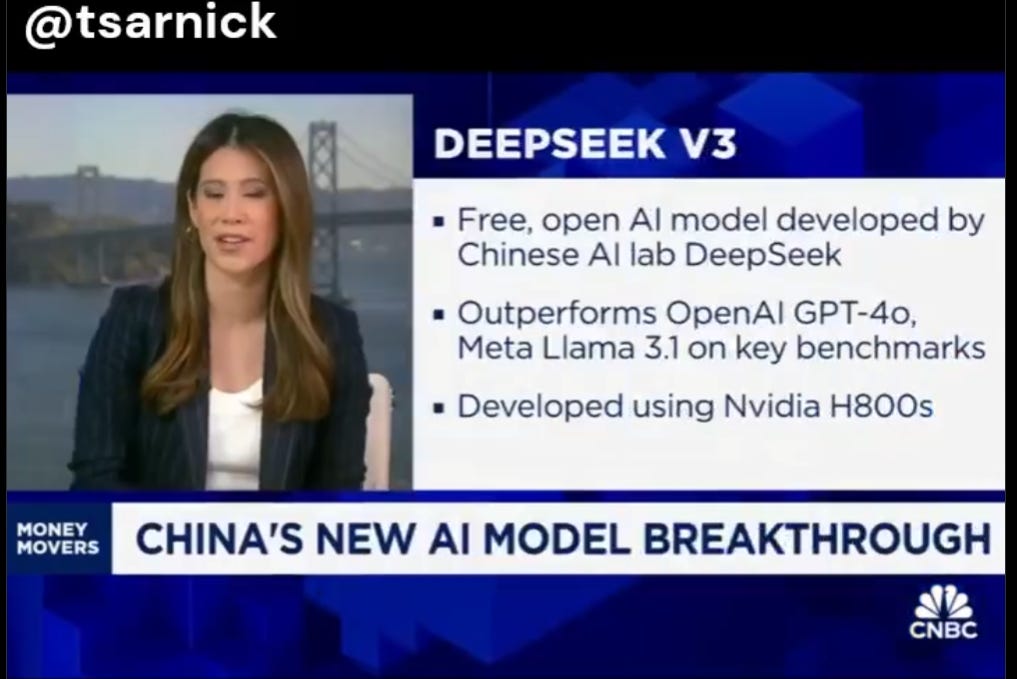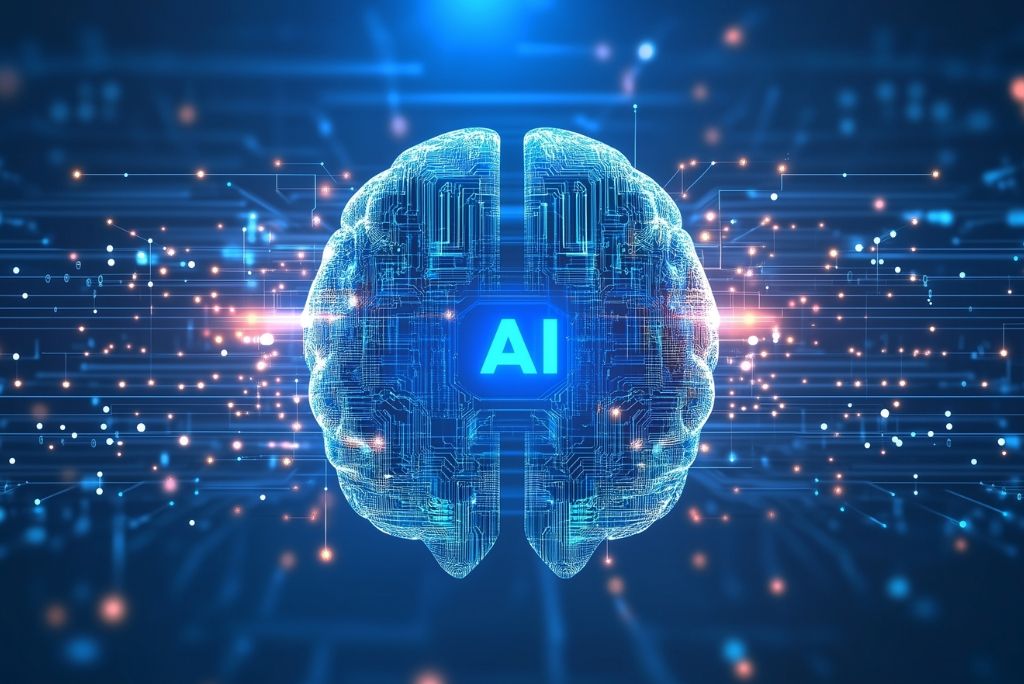
Guyanajob
Add a review FollowOverview
-
Founded Date June 3, 1924
-
Sectors General Labour
-
Posted Jobs 0
-
Viewed 25
Company Description
DeepSeek: is this China’s ChatGPT Moment and a Wake-up Call for The US?
DeepSeek’s technological task has surprised everybody from Silicon Valley to the whole world. The Chinese laboratory has produced something monumental-they have actually presented an effective open-source AI model that measures up to the very best used by the US business. Since AI companies need billions of dollars in investments to train AI designs, DeepSeek’s innovation is a masterclass in optimum usage of minimal resources. This suggests that along with financial investments, foresight too is required to innovate in the truest sense. It also goes on to show how necessity can drive innovation in unexpected ways.

China’s emergence as a strong player in AI is happening at a time when US export controls have actually limited it from accessing the most innovative NVIDIA AI chips. These controls have actually likewise restricted the scope of Chinese tech firms to take on their bigger western counterparts. Consequently, these business turned to downstream applications rather of developing proprietary designs. Advanced hardware is vital to developing AI items and services, and DeepSeek attaining a development reveals how constraints by the US might have not been as efficient as it was meant.

Under these situations, DeepSeek’s popularity is a story in itself. The Chinese AI company apparently simply invested $5.6 million to develop the DeepSeek-V3 design which is surprisingly low compared to the millions pumped in by OpenAI, Google, and Microsoft. Sam Altman-led OpenAI supposedly invested a whopping $100 million to train its GPT-4 design. On the other hand, DeepSeek trained its breakout model using GPUs that were considered last generation in the US. Regardless, the results achieved by DeepSeek competitors those from a lot more costly models such as GPT-4 and Meta’s Llama.

DeepSeek is based out of HangZhou in China and has business owner Lian Wenfeng as its CEO. Wenfeng, who is likewise the co-founder of the quantitative hedge fund High-Flyer, has been dealing with AI jobs for a very long time. Reportedly in 2021, he purchased thousands of NVIDIA GPUs which numerous saw to be another quirk of a billionaire. However, in 2023, he launched DeepSeek with an aim of working on Artificial General Intelligence. In one of his interviews to the Chinese media, Wenfeng stated that his choice was encouraged by clinical interest and not profits. Reportedly, when he set up DeepSeek, Wenfeng was not trying to find knowledgeable engineers. He wished to deal with PhD students from China’s premier universities who were aspirational. Reportedly, a lot of the employee had actually been released in top journals with various awards. Wenfeng’s values and belief system is shown in DeepSeek’s open-sourced nature which has actually made adoration from the global AI community.
Setting a new standard for innovation
Even as AI business in the US were utilizing the power of sophisticated hardware like NVIDIA H100 GPUs, DeepSeek counted on less effective H800 GPUs. This might have been only possible by releasing some inventive strategies to increase the efficiency of these older generation GPUs. Apart from older generation GPUs, technical styles like multi-head latent attention (MLA) and Mixture-of-Experts make DeepSeek models less expensive as these architectures require fewer compute resources to train.

DeepSeek-V3 has actually now gone beyond larger designs like OpenAI’s GPT-4, Anthropic’s Claude 3.5 Sonnet, and Meta’s Llama 3.3 on numerous standards, which consist of coding, solving mathematical issues, and even spotting bugs in code. Even as the AI community was grasping to DeepSeek-V3, the AI lab launched yet another reasoning design, DeepSeek-R1, last week. The R1 has actually outshined OpenAI’s newest O1 model in several criteria, consisting of math, coding, and basic knowledge.
DeepSeek is acquiring worldwide attention at a time when OpenAI was reorganizing itself to be a for-profit organisation. The Chinese AI laboratory has launched its AI designs as open source, a stark contrast to OpenAI, enhancing its worldwide impact. Being open source, developers have access to DeepSeeks weights, enabling them to build on the model and even refine it with ease. This open-source nature of AI designs from China could likely indicate that Chinese AI tech would ultimately get embedded in the global tech community, something which up until now only the US has been able to attain.

What is at stake on the international stage?
The runaway success of DeepSeek likewise raises some issues around the wider implications of China’s AI advancement. While being open-source, it enables international partnership; its advancement, based on Chinese state guidelines, could possibly hinder its growth.
Critics and experts have stated that such AI systems would likely reflect authoritarian views and censor dissent. This is something that has been a raving issue when it came to the dispute around permitting ByteDance’s TikTok in the US. While largely amazed, some members of the AI neighborhood have actually questioned the $6 million cost tag for building the DeepSeek-V3. Additionally, many designers have actually mentioned that the model bypasses questions about Taiwan and the Tiananmen Square occurrence.
Now, more than ever, there are concerns on if AI would show and openness, especially if it has actually been developed by authoritarian government-led nations.
Why is the US rattled?
On the second day as the President of the United States, Donald Trump announced the Stargate Project, an enormous $500 billion effort that combines tech titans OpenAI, Oracle, and SoftBank. In his address, Trump explicitly said that the US means to have an edge over China. The Stargate project intends to create cutting edge AI facilities in the US with over 100,000 American jobs. Trump highlighted how he desires the US to be the world leader in AI. “This project ensures that the United States will remain the worldwide leader in AI and innovation, instead of letting rivals like China acquire the edge,” Trump said.

The hurried statement of the mighty Stargate Project indicates the desperation of the US to preserve its leading position. While DeepSeek may or may not have stimulated any of these developments, the Chinese laboratory’s AI models creating waves in the AI and developer community around the world suffices to send feelers.

Moreover, China’s development with DeepSeek obstacles the long-held idea that the US has been leading the AI wave-driven by big tech like Google, Anthropic, and OpenAI, which rode on massive financial investments and state-of-the-art infrastructure. The undeniable AI management of the US in AI showed the world how it was important to have access to enormous resources and cutting-edge hardware to ensure success. DeepSeek remains in a method undermining the presumption that US-based AI companies have the benefit over AI firms from other nations. Until in 2015, lots of had declared that China’s AI improvements were years behind the US.
The Chinese AI lab has likewise demonstrated how LLMs are increasingly ending up being commoditised. This might likely threaten the competitive edge US tech giants have over their counterparts from the rest of the world. The narrative of America’s AI leadership being invincible has actually been shattered, and DeepSeek is proving that AI innovation is just not about funding or having access to the best of infrastructure. This likewise highlights the need for the US to adapt and innovate faster if it aims to keep its leadership.

